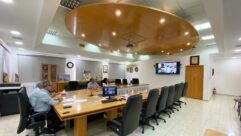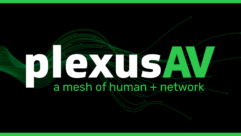Plastic an Option for Fiber-Based AV Installs?
Feb 14, 2007 8:00 AM
Looking for a data transport system that offers the advantages of optical fiber without the cost and complexity of glass fiber installs, AV systems integrators are paying more attention to plastic optical fiber, or POF. For short runs, in particular, POF is gaining ground as a convenient and economical alternative to glass.
“The market has been doubling every year for the last four years for plastic optical fiber,” says Randy Dahl of Industrial Fiber Optics in Tempe, Ariz. Industry Consultants IGI Consulting projects that in 2006, the total market for POF reached approximately $2 billion, quadruple its level in 2002. IGI’s president, Dr. Paul Polishuk, also acts as secretary of the Plastic Optical Fiber Trade Organization, and says growing implementation of a new IEEE standard has helped drive this expansion by greatly increasing the performance of plastic fiber:
”[IEEE 1394B] has a POF spec that now is up to 400Mbps at 50m.”
This capacity and reach could make POF ideal for on-premises data in many common AV settings. Sean Gitt, director of marketing at Timbercon, says “Be it a corporate campus, university, or other environment, POF is far superior to most of the widely used copper solutions on the market, as it has a higher bandwidth capacity, much lighter weight, and EMI/RFI immunity.”
These advantages do begin to fade as distance increases, though, because signal loss or degradation over plastic fibers is significantly greater than over glass.
Still, Gitt points out, “As of mid-last year, POF was supporting 10G transmission over 100, which is very good for plastic fiber. I think the increasing demand for more bandwidth to the premise or desktop will help facilities [make] more use of this medium in these capacities.”
AV integrator Glenn Polly of Videosonic, New York, terms IEEE 1394 a simple, low-cost, high-capacity multimedia connection that could prove suitable for short-distance applications. As he says, “Certainly, its bidirectional capabilities will simplify connections between AV equipment, with input and output signals traveling on the same cable.”
“POF is not suitable for long distance compared to glass,” Polly adds. “On the other hand, it is very robust, can be bent to a 25mm radius without breaking, and is strong against vibration, so its application in automobiles, trains, amusement rides, and the like is where the interest is.”
Plastic fiber is distinctly thicker than glass fiber, with a diameter up to eight times greater than a typical glass cable. Also, the light source used with POF is typically LED rather than a laser, which is both cheaper and less potentially hazardous to the eyes.
Polishuk points out another POF appeal when he says, “The amount of training to install POF is minimal…the tools are simple.” Gitt cautions, though, that this appealing simplicity really depends on the specifics of a particular installation and the skills of the installer.
“One of the most critical components of any fiber cable, POF or glass, is the polish,” he explains. “With silica fiber cables, good polishing is considered an art form. With POF it is not nearly as critical, but the ability to achieve a good polish on any cable will have a direct impact on its ability to perform.”










